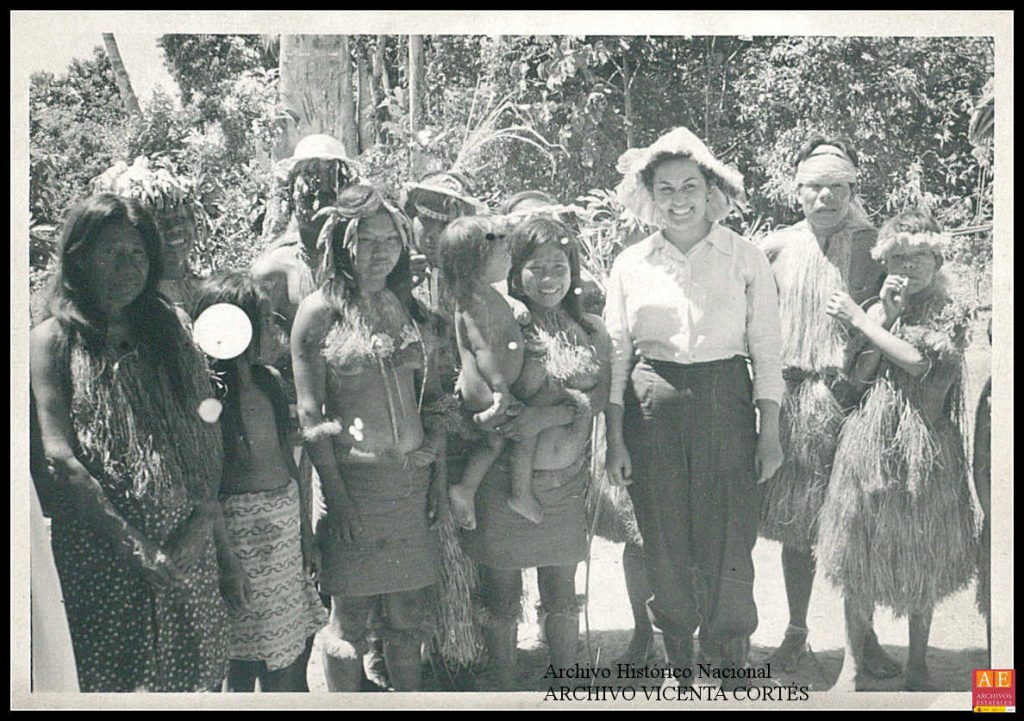
Professor Vicenta Cortés Alonso in Colombia among some yagua indigenes in 1959 (source: Archivo Histórico Nacional – Archivo Vicenta Cortés).
As it has been repeatedly emphasized, the conquest of the Canaries is like the test tube in the first reaction between two elements that were to intermix very soon and in greater proportions as the large oceanic routes unfold: the European and the aboriginal, each with its own material and spiritual baggage.
Vicenta Cortés Alonso[1]CORTÉS (1955), p. 501. (This translation by PROYECTO TARHA)
Past the International Archives Day‘s celebration, we would like to pay a humble tribute to Professor Vicenta Cortés Alonso (Valencia, 1925), a tireless master of archivists, recalling one of her most significant work for the Canarian historiography: The conquest of the Canary Islands through the sales of slaves in Valencia.
A woman particularly aware of the African and American indigenous world, Dr. Cortés Alonso offers in this paper a reconstruction of human trafficking between the 15th and 16th centuries. An activity that, being shocking to us nowadays, was –and regrettably we can say it still is– not only fully accepted in many human communities around the world, but also in many particular cases was subjected to a very precise regulation, both in captivation and liberation mechanisms. Thus, the Castilian laws body itself -the famous seven Partidas promulgated by King Alfonso X, making difference between prisoners and captives, states that captives are called by law those who fall into prison by men of another faith. […] this it is the greatest misfortune that men can have in this world.[2]Partida II, Title XXIX, Law I.
The study concludes with a compilation of the official entries of various purchases and sales of captives and related procedures carried out between 1489 and 1515 -an interval that started almost synchronously with the bloody repression ordered by the Catholic Monarchs to Governor Pedro de Vera, upon the uprising of La Gomera against Fernán Peraza the Younger, topped with an index of more than one hundred valencianized indigenous anthroponyms contained in these records, among which various indigenous personal names used today, as Besay, Beselch, Atteneri, Xerach , Janequa, Cathaysa, Itahisa, etc. stand out.
Note that these names were almost certainly obtained from the captives themselves, and that the notaries in charge of wrting them down would have used the Valencian language, so their pronunciation would correspond to the phonemes of the Valencian language. Thus, Beselch would probably be pronounced in English “behselk”; Xerach, “shehrak”; Janequa, “janehqua”; and Itahisa, “etahesah” (as the “h” would be possibly aspirated and not muted as in both modern Valencian or Spanish). The stressed syllable, however, is unknown, as diacritical marks (accents) were not used at the time and there were no rules for establishing them.
Antonio M. López Alonso
